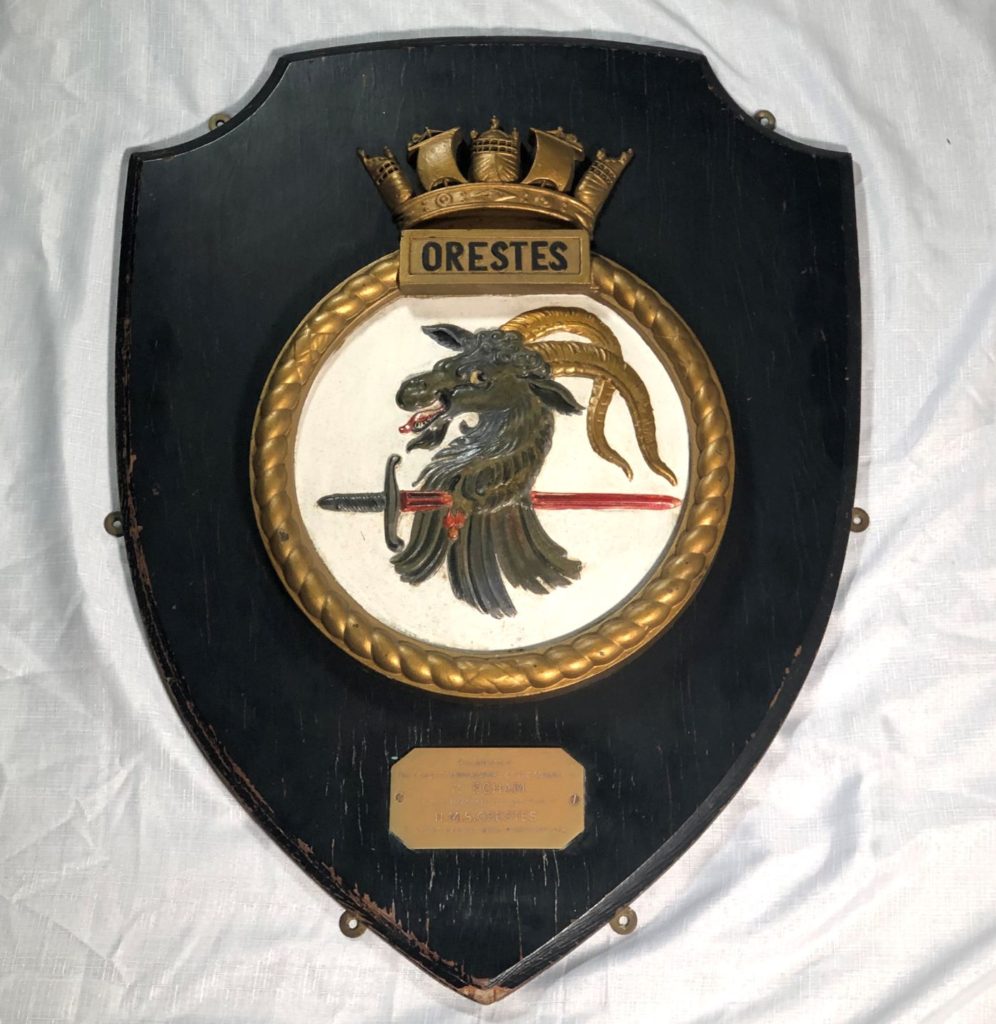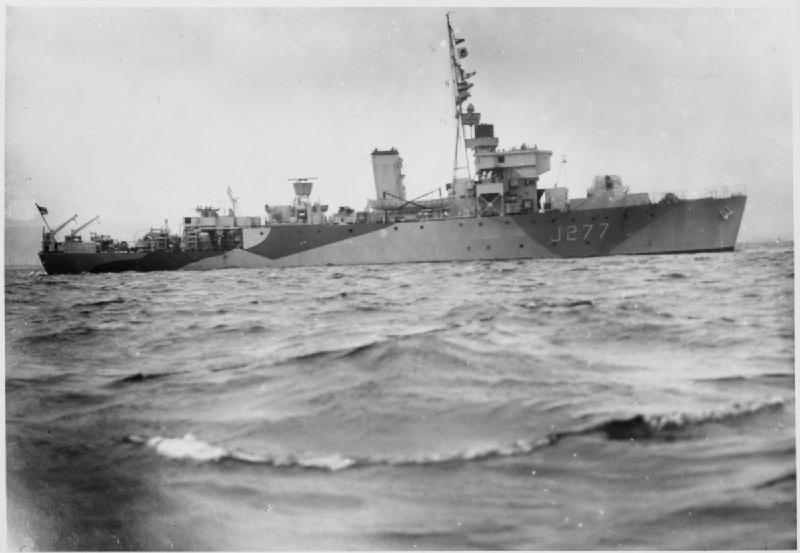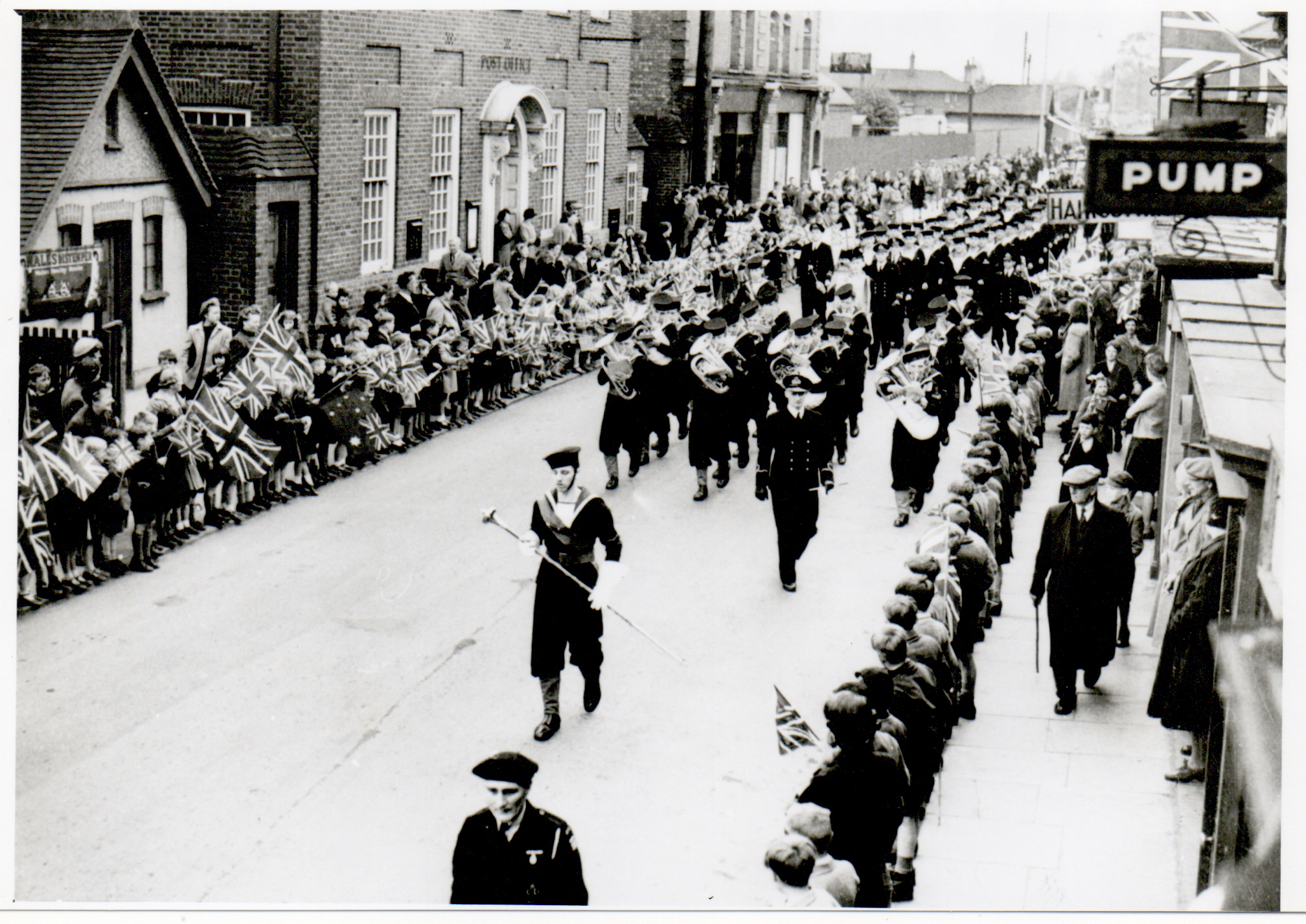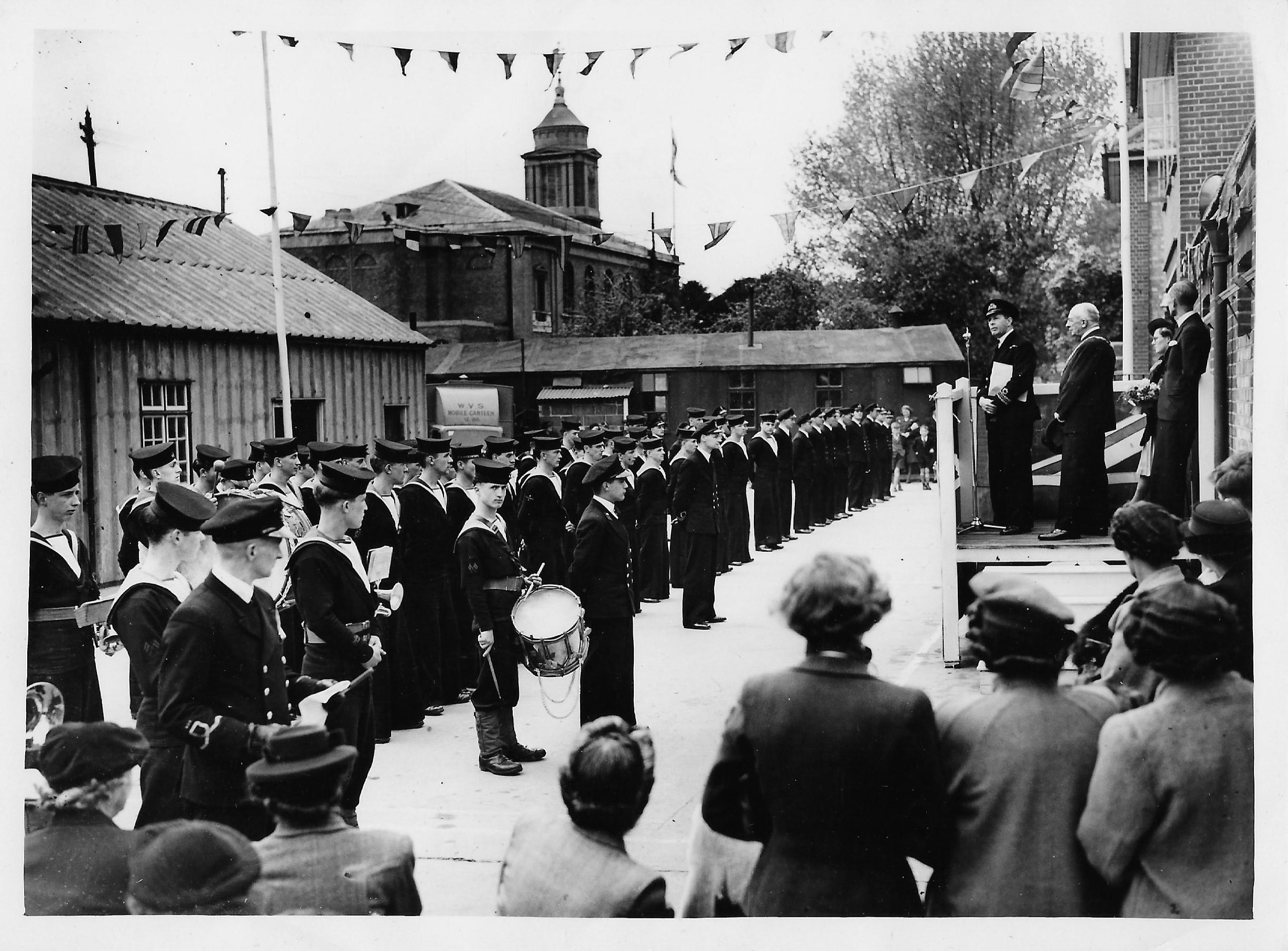HMS Orestes Plaque
“Presented by The Lords Commissioners of the Admiralty to EGHAM to commemorate the adoption of HMS ORESTES during Warship Week March 14th 1942.”

During the Second World War (1939-1945), The National War Savings Committee began an initiative to raise money for the Admiralty, through ‘Warship Week’ campaigns. The campaigns would help raise money to build ships to replace early war loses, protect the Atlantic convoys and to expand the Royal Navy.
As part of ‘Warship Week’ campaigns, cities would raise money to ‘adopt’ battleships and aircraft carriers while towns and villages were set the challenge to raise enough money to support cruisers and destroyers. If towns raised enough money, they could ‘adopt’ the ship and its crew. The ship’s crew would visit the adopting town or village and a parade and entertainment would typically take place in their honour.
The total amount of money raised by this national campaign was over £955 million and a total of 8 battleships, 4 carriers, 49 cruisers, 301 destroyers, 25 submarines, 164 corvettes and frigates and 288 minesweepers, including Egham’s H.M.S Orestes, were adopted.
HMS Orestes
HMS Orestes was an ‘Algerine’ Class minesweeper built by Lobnitz and Co. Ltd. of Renfrew, Scotland. Construction began on the 27th of March 1942 and she was launched on the 25th of November 1942 and was ready for service in April 1943. HMS Orestes carried one 4 inch naval gun and 4 single oerlikon cannons.

On entering service, HMS Orestes was attached to the 18th Minesweeping Flotilla, attached to the Orkneys and Shetland Command. As was common with minesweepers, HMS Orestes was often on convoy escort duty, typically escorting convoys to and from North Russia.
In the collection, we have a letter from Jim Fisher, recalling his war-time service on the ship. In the letter, Jim Fisher recalled that, “She was indeed engaged in her early career on Russian Convoys, on one we lost a man overboard in Iceland” Jim Fisher continues, “These convoys were certainly an experience of which I shall always remember 40ft seas and she used to roll around like a cork.”
In June 1944 she was transferred to the Channel and took part in the Normandy landings, clearing an approach for the assault at Asnelles.
Mr R. G. Lamming, writing for the BBC People’s War Archive, detailed a story of HMS Orestes in action off the coast of France on Monday 12th June 1944.
“At 8.30 we were attacked by one man torpedoes. One ship blows up and sinks, we detail H.M.S. Sockerteice to pick up survivors. We steam full ahead towards Le Harve, which is the German naval base. After ten minutes we sight our first sub. We close and fire depth charges and the four inch gun, plus all the small arms fire. We see no sign of him after this, on we go and sight number two. We give him the same treatment, he is on the surface and bales out as we see the torpedo go down. We pick him up. While on deck he stands to attention, raising his arm and at the same time shouting “Heil Hitler”. He looked about sixteen years old. No wonder it’s taking a long time to win this war.
We removed his uniform and put him in the sick bay. He could not speak a lot of English, but he kept shouting “Churchill has got a big mouth”. I took his clothes down to the engine room to dry out and then reported to the captain. After about forty minutes the captain told me to go down and get the prisoner dressed and reading for handing over. When I arrived at the engine room I found that all the badges on his uniform had been removed. I reported this to the captain who went berserk. He informed the ship’s company that all leave would be stopped until the badges were replaced. May I say that thirty minutes later all the badges had been replaced and the prisoner was handed over well dressed and in good health.”
A visit to Egham
On the 24th April 1945, Lieutenant-Commander D.H. Coughlan DSC., RNVR. Officer Commanding, together with six of his officers, one Midshipman and about 60 Ratings visited Egham.
They were met by Mr. H. Jarman (Chairman, Egham Urban District Council), Mr. H. Smith (the Town Clerk) and other local representatives. The party marched to Egham Fire Station, led by a band from the Feltham Sea Cadet Corps, and on arrival the ship’s Battle Ensign was hoisted on the fire station flagpole, where it remained throughout the visit. Entertainment for the visitors included a film show at the Savoy Cinema, a high tea at the Literary Institute and, in the evening, a dance at Great Fosters. The visitors stayed in Egham overnight and returned to their ship the following day.
In 1947 the Orestes was reduced to the Reserve Fleet, was briefly assigned to the Fishery Protection Squadron and finally, in 1963, sold to the British Iron and Steel Corporation and scrapped.





